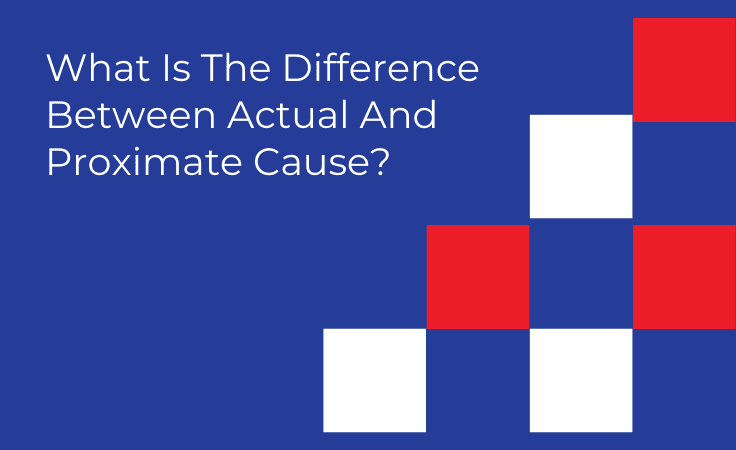When you suffer injuries due to another person’s negligence, you can recover economic and non-economic damages from the at-fault party through a Bakersfield personal injury lawsuit. To prove your right to compensation, you will need to prove that the defendant violated his or her duty of care to you. You will also need to prove that this violation was the actual and proximate cause of your injuries.
Understanding the difference between actual and proximate cause is very important for a personal injury claim. While actual cause is relatively straightforward, establishing proximate cause can be more complex.
Actual Cause versus Proximate Cause
Actual cause, also known as cause in fact, refers to the actual cause of your accident. For example, if you are driving through an intersection and an oncoming commercial truck runs a red light, the truck driver’s actions are the actual cause of the collision.
Proximate cause refers to the legal cause, or the cause that the law recognizes as the primary cause of the accident. In your case, the proximate cause may not be the first event that contributed to your injuries. It may not be the last event that occurs before the accident either.
Instead, the proximate cause is the natural and direct cause of your injuries, and your injuries are a natural, direct, and foreseeable consequence of the proximate cause. In other words, if the proximate cause had not occurred, you would have not suffered injuries.
The Substantial Factor Test for Proximate Cause
When determining whether or not a defendant’s actions are the proximate cause of an accident, California courts perform the substantial factor test. The court must determine whether the at-fault party’s conduct was a substantial and relevant contributory factor in the accident.
For example, say that you are driving on a highway when you notice a vehicle driving on the wrong side of the road. In order to avoid a head-on collision, you swerve to the side and accidentally strike the highway’s guardrail. Since you would have not swerved but for the other driver’s actions—in this case, driving on the wrong side of the road—you can establish that the defendant’s actions played a substantial part in causing the accident. Using this information, you can establish the proximate cause.
The defendant’s conduct is not a substantial factor if the accident would have occurred regardless of his or her actions. You also cannot use conduct that is trivial or far removed from the actual events of the accident.
For example, say that you are in a head-on collision while driving to work. The city has closed your usual route for construction, so you have to take a detour. When driving on the unfamiliar road, you collide into a vehicle traveling in the wrong direction.
While you would have a claim against the other driver, you cannot hold the city liable for closing your usual route. While you would not have been in the accident if not for the construction, it is too remote, or too far removed, from the actual accident to be a substantial factor. For more information, contact a Bakersfield personal injury attorney today.
If you are in an accident, proving actual and proximate cause can be difficult without legal representation. A California personal injury lawyer will understand these statutory rules and will use his or her experience to craft a compelling case in your favor. After seeking medical attention, contact an injury lawyer to discuss your claim.
